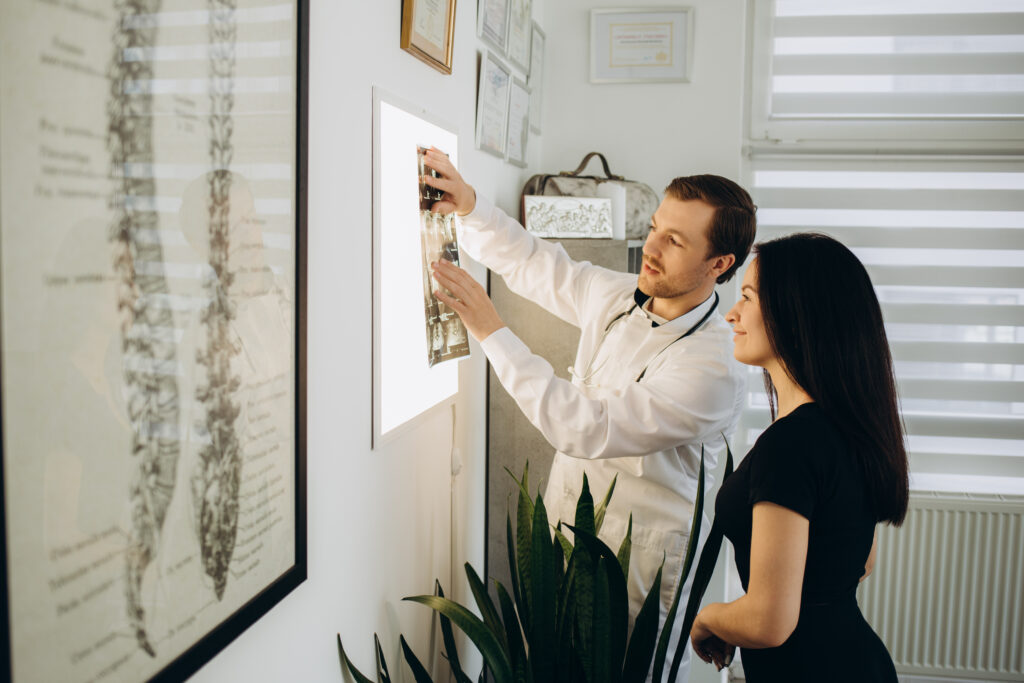When it comes to addressing spinal issues, various approaches have been developed over the years. One intriguing method that has gained attention is the use of spinal weighting apparatuses. But how do these apparatuses work, and what makes them effective in addressing conditions like scoliosis? Dr. Andrew Strauss will delve into the mechanics of spinal weighting and understand its role in corrective maneuvers.
Understanding the Basis of Spinal Weighting
Spinal weighting operates on a unique principle – creating a reaction within the body. Unlike traditional bracing effects that push the body into a certain position, spinal weighting relies on the body’s natural response to added weights. This method is not about forcing the body into correction but rather allowing it to react and self-adjust.
Imagine a scenario where an individual has a thoracic curve. When spinal weighting is applied correctly, the added weight prompts an automatic reaction in the body. This reaction manifests as the body pushing itself into a corrective maneuver. This process, in turn, facilitates the retraining of internal postural mechanisms in the brain.
Spinal Weighting Apparatuses: Not a Push, but a Reaction
It’s crucial to emphasize that spinal weighting is not about applying external force to push the body into a desired position. Instead, it utilizes the body’s innate responsiveness to the added weights, encouraging it to find its way back to a more aligned state. This subtlety in approach distinguishes spinal weighting from conventional methods and contributes to its effectiveness in addressing spinal issues.
The Origins of Postural Weighting
The roots of postural weighting can be traced back to the efforts of a chiropractor named Petabon in the 1970s. Originally developed as a method to address posture, postural weighting has evolved significantly over the years. Numerous contributors have refined and expanded upon the principles behind this technique, resulting in an effective approach for treating conditions such as scoliosis.
Retraining Internal Postural Mechanisms
One of the key objectives of spinal weighting is to retrain the internal postural mechanisms in the brain. By inducing a reaction through added weights, the body learns to correct itself. This correction is not only a temporary adjustment but becomes ingrained in the muscle memory and postural mechanisms over time.
As the body consistently reacts to the applied weights, the muscles and postural mechanisms gradually adapt to the corrected position. This adaptive process contributes to the long-term effectiveness of spinal weighting as part of a comprehensive scoliosis exercise program.
The Effectiveness of Body Weighting in Scoliosis Treatment
Scoliosis, characterized by abnormal curvature of the spine, poses unique challenges in treatment. While various approaches exist, body weighting has emerged as a particularly effective component of a comprehensive and customized scoliosis exercise program.
Incorporating body weighting into the treatment plan allows for a holistic approach to scoliosis management. It goes beyond merely addressing the structural aspects of the spine and engages the body’s natural ability to correct itself. This makes spinal weighting a valuable tool for chiropractors and healthcare professionals working with individuals dealing with scoliosis.
Customization for Optimal Results
An essential aspect of the effectiveness of spinal weighting is its customization. Each individual’s condition is unique, and a one-size-fits-all approach may not yield optimal results. Therefore, a comprehensive scoliosis exercise program incorporating spinal weighting should be tailored to the specific needs and characteristics of the patient.
Customization involves not only determining the appropriate amount of weight but also considering the placement and duration of its application. These factors play a crucial role in ensuring that the body responds positively to the weights, gradually moving towards a corrected posture.
Patient Compliance and Consistency
As with any therapeutic approach, patient compliance is a critical factor in the success of spinal weighting. Consistency in wearing the weights and following the prescribed exercise routine is essential for achieving the desired outcomes. Healthcare professionals working with scoliosis patients using spinal weighting must educate and motivate individuals to adhere to their customized programs.
A Step Towards Improved Posture and Functionality
Spinal weighting apparatuses work by harnessing the body’s natural reactions to added weights. This method, rooted in the development of postural weighting by pioneers like Petabon, has become a valuable tool in treating conditions such as scoliosis. By facilitating corrective maneuvers and retraining internal postural mechanisms, spinal weighting contributes to improved posture and functionality.
The effectiveness of spinal weighting lies in its gentle yet profound impact on the body’s ability to self-adjust. As part of a comprehensive and customized scoliosis exercise program, spinal weighting offers a promising avenue for individuals seeking a holistic approach to spinal health and postural correction. As research and technology continue to advance, the field of spinal health may see further innovations, but for now, spinal weighting stands as a testament to the intricate connection between the body’s natural responses and effective therapeutic interventions.
Also read: Effective Home Based Scoliosis Exercises
About:
Dr. Strauss is the director of the Hudson Valley Scoliosis Correction Center in New York. He has been actively engaged in scoliosis treatment for the past 30 years and has authored two books on the subject, Your Child Has Scoliosis and The Truth About Adult Scoliosis.
He is Vice President of the CLEAR Scoliosis Institute and a lecturer for their introductory and advanced workshops. He is certified in scoliosis bracing and in the use of scoliosis specific exercises. Dr. Strauss is a graduate of the ISICO World Masters of Scoliosis.His postgraduate studies also include a Masters Degree in Acupuncture as well as training in Grostic, Pettibon, CBP, Clinical Nutrition, Chinese Herbal Medicine, Manipulation under Anesthesia, and Electrodiagnosis.
His scoliosis practice has treated patients from 25 states and 32 other foreign countries.If you have questions about childhood and adult scoliosis and how it can be successfully treated without surgery subscribe to our channel!
